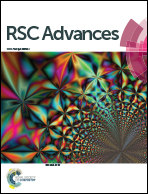Rheological properties of the polysaccharide–protein complex from longan (Dimocarpus longan Lour.) pulp
Abstract
Crude longan polysaccharide (CLP) was extracted from longan (Dimocarpus longan Lour.) pulp. Its chemical composition was determined by chemical analysis, high-performance liquid chromatography (HPLC) and gel permeation chromatography (GPC). The flow and viscoelastic behavior of a CLP solution was investigated by carrying out steady shear and small amplitude oscillatory shear (SAOS) experiments, respectively. The results showed that the CLP solution was a polysaccharide–protein complex. The rheology experiments showed that it underwent a pseudoplastic flow at various shear rates (0.1–100 s−1). Both the flow behavior and viscoelastic behavior of CLP were influenced by cations such as Na+ and Ca2+. Increases of the apparent viscosity, G′ and G′′ accompanied the addition of Na+ and Ca2+. A polysaccharide named LPB-2-M was obtained from isolation and purification of CLP; this polysaccharide was shown to consist of a single component due to the narrow molecular weight distribution, which was evident by the polydispersity index (PDI = Mw/Mn). The average molecular weight (Mw) of LPB-2-M was 80 kDa.


 Please wait while we load your content...
Please wait while we load your content...